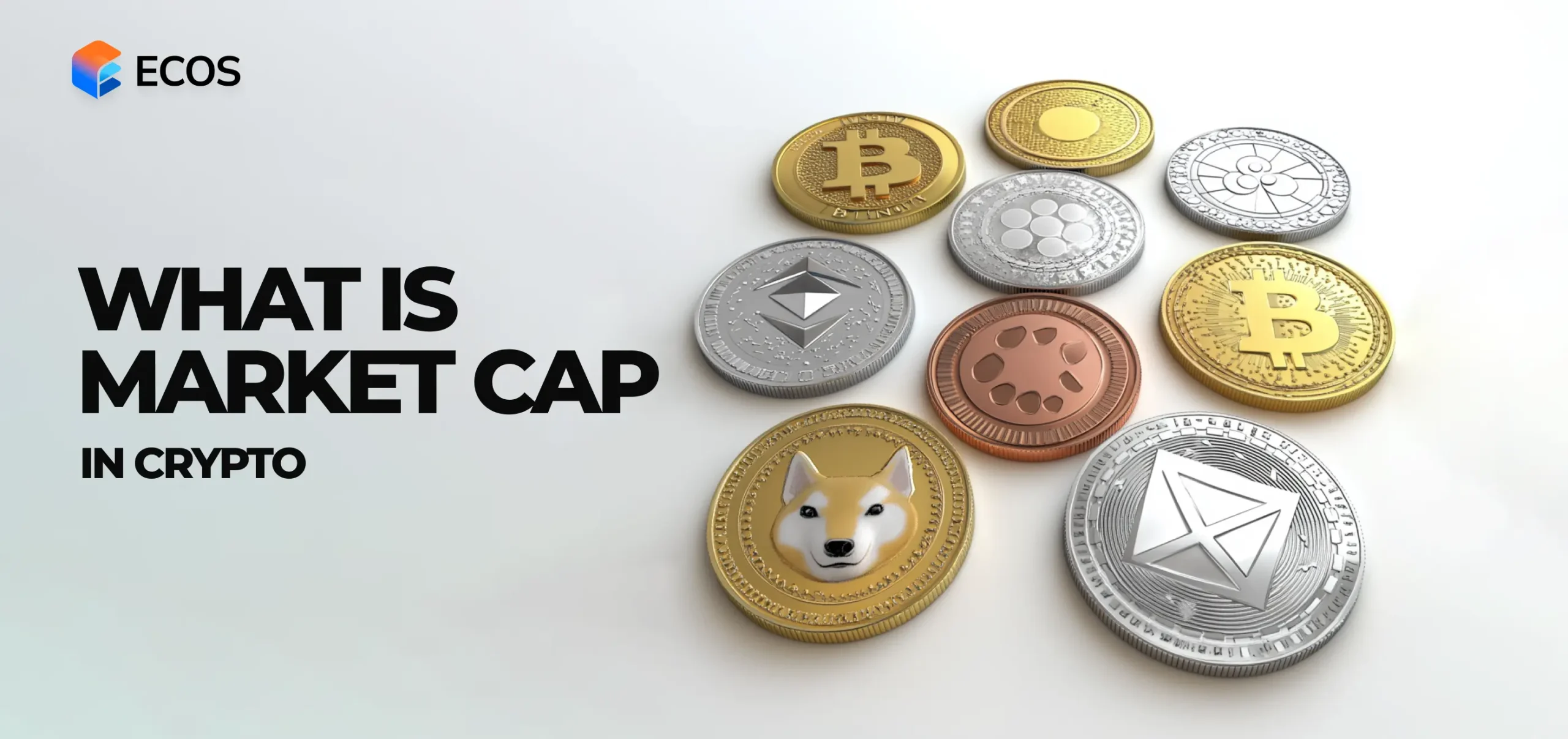Key Takeaways
-
While market cap provides valuable insights, it has its limitations. Consider other metrics, such as trading volume, Total Value Locked (TVL), and liquidity, to gain a more comprehensive understanding of a cryptocurrency's performance.
-
Spread your investments across different market cap ranges to minimize risk and maximize returns. A diversified portfolio can help you navigate the volatile cryptocurrency market with confidence.
-
Large-cap cryptocurrencies offer stability and relatively low risk, while small-cap and micro-cap cryptocurrencies offer higher growth potential but also higher risk.
-
Keep an eye on changes in market cap to identify trends and adjust your investment strategy accordingly.
-
Cryptocurrency investing is high-risk, high-reward. Never invest more than you can afford to lose, and always prioritize risk management.
The cryptocurrency market has experienced tremendous growth in recent years, with thousands of digital assets vying for attention and investment. As the market continues to evolve, it’s essential to understand the key metrics that drive it. One crucial concept is market capitalization, which plays a vital role in evaluating the size and potential of a cryptocurrency.

What is Market Capitalization in Cryptocurrency?
Market capitalization, commonly referred to as market cap, is the total value of all outstanding coins or tokens in circulation. In the context of cryptocurrency, market capitalization is calculated by multiplying the total circulating supply of a particular coin or token by its current market price. The formula is simple:
Market Capitalization = Circulating Supply x Current Market Price
For example, if a cryptocurrency has a circulating supply of 10 million coins and a current market price of $10, its market capitalization would be $100 million.
In traditional finance, market capitalization is used to classify companies as large-cap, mid-cap, or small-cap. Similarly, in the cryptocurrency space, market capitalization is used to categorize coins or tokens as large-cap, mid-cap, or small-cap. This classification helps investors understand the relative size and potential of a cryptocurrency.
As CoinMarketCap, a leading cryptocurrency data provider, notes, “Market capitalization is a key metric for cryptocurrency investors, as it provides a snapshot of a coin’s size and liquidity.” Understanding market capitalization is essential for investors, traders, and enthusiasts alike, as it helps them make informed decisions about their investments and stay up-to-date with market trends.
Types of Market Capitalization
In the cryptocurrency market, market capitalization is used to categorize coins or tokens into different tiers based on their market size. This classification helps investors understand the relative size and potential of a cryptocurrency. There are three main types of market capitalization: large-cap, mid-cap, and small-cap.
| Type | Market Capitalization | Examples |
| Large-Cap | ≥ $10 billion | Bitcoin, Ethereum, Tether |
| Mid-Cap | $1 billion – $10 billion | Solana, Cardano, Polkadot |
| Small-Cap | < $1 billion | Chainlink, Cosmos, VeChain |
Large-Cap Cryptocurrencies
Large-cap cryptocurrencies are the largest and most established players in the market. They have a market capitalization of $10 billion or more and are often considered stable and less volatile. These cryptocurrencies are typically well-known and widely adopted, with a large user base and a strong brand presence.
Some of the top large-cap cryptocurrencies include:
- Bitcoin
- Ethereum
- Tether
- Ripple
- Litecoin
Mid-Cap Cryptocurrencies
Mid-cap cryptocurrencies have a market capitalization between $1 billion and $10 billion. They are often considered to be in the growth stage, with a moderate level of adoption and a developing user base. Mid-cap cryptocurrencies may have a higher potential for growth than large-cap cryptocurrencies, but they also come with a higher level of risk.
Some popular mid-cap cryptocurrencies include:
- Solana
- Cardano
- Polkadot
- Stellar
- EOS
Small-Cap Cryptocurrencies
Small-cap cryptocurrencies have a market capitalization of less than $1 billion. They are often considered to be in the early stages of development, with a small user base and limited adoption. Small-cap cryptocurrencies come with a higher level of risk, but they also have the potential for higher returns.
Some examples of small-cap coins that have grown significantly include:
- Chainlink
- Cosmos
- VeChain
- Binance Coin
- Tron
Why Does Market Cap Matter?
Market capitalization is a crucial metric for investors, as it provides a snapshot of a cryptocurrency’s size and liquidity. Understanding market capitalization is essential for making informed investment decisions and staying up-to-date with market trends.
Here are some reasons why market cap matters:
- Better indicator of value: Market capitalization is a more accurate indicator of a cryptocurrency’s value than its price alone.
- Reflects total value: Market cap reflects the total value of a cryptocurrency, taking into account its circulating supply and market price.
- Gauges stability: Market capitalization can help gauge the stability of a cryptocurrency, with larger market caps often indicating more stability.
- Comparability: Market cap allows for easy comparison between different cryptocurrencies, helping investors make informed decisions.
Market Cap vs. Price: What’s More Important?
While price is often the first metric that comes to mind when evaluating a cryptocurrency, market capitalization provides a more comprehensive picture of a cryptocurrency’s value. Here’s an example of how market cap can be a better indicator of value than price:
| Cryptocurrency | Price | Market Capitalization |
| Bitcoin | $50,000 | $1 trillion |
| Altcoin X | $1,000 | $100 million |
In this example, Altcoin X has a higher price than Bitcoin, but its market capitalization is significantly lower. This indicates that Bitcoin has a larger market size and greater stability than Altcoin X, despite its lower price.
How to Calculate Market Cap for Cryptocurrencies
Calculating market capitalization (market cap) for cryptocurrencies is a straightforward process that involves multiplying the total circulating supply of a cryptocurrency by its current market price. Here’s a step-by-step guide to calculating market cap:
- Find the total number of coins or tokens that are currently in circulation.
- Find the current market price of the cryptocurrency.
- Multiply the circulating supply by the market price to get the market capitalization.
Example:
Let’s say we want to calculate the market capitalization of Bitcoin. The circulating supply of Bitcoin is 18,000,000, and the current market price is $50,000.
Market Capitalization = Circulating Supply x Market Price
Market Capitalization = 18,000,000 x $50,000 = $900,000,000,000
How Changing Circulating Supply or Price Affects Market Cap
Here’s an example of how changing the circulating supply or price affects market capitalization:
| Circulating Supply | Market Price | Market Capitalization |
| 18,000,000 | $50,000 | $900,000,000,000 |
| 20,000,000 | $50,000 | $1,000,000,000,000 |
| 18,000,000 | $60,000 | $1,080,000,000,000 |
As you can see, an increase in circulating supply or market price leads to an increase in market capitalization.
Factors Affecting Market Cap
Several factors can affect a cryptocurrency’s market capitalization. These include:
- Price changes: An increase or decrease in the market price of a cryptocurrency affects its market capitalization.
- Supply changes: An increase or decrease in the circulating supply of a cryptocurrency affects its market capitalization.
- Volatility: Market volatility can lead to fluctuations in market capitalization.
- Economic impact: Economic events, such as regulatory changes or global economic downturns, can affect market capitalization.
Market Cap vs. Fully Diluted Market Cap
When evaluating a cryptocurrency’s market value, two important metrics come into play: market capitalization and fully diluted market capitalization. While both metrics provide insights into a cryptocurrency’s value, they differ in their calculation and implications.
- Market Cap is the total value of a cryptocurrency’s outstanding coins or tokens in circulation. It is calculated by multiplying the total circulating supply by the current market price.
- Fully Diluted Market Cap, on the other hand, is the total value of a cryptocurrency’s total supply, including both circulating and future coins or tokens that have not yet been mined or released. This metric provides a more comprehensive view of a cryptocurrency’s potential value.
Here’s a visual comparison of market cap and fully diluted market cap:
| Metric | Calculation | Considerations |
| Market Cap | Circulating Supply x Market Price | Only accounts for current circulating supply |
| Fully Diluted Market Cap | Total Supply x Market Price | Accounts for both current and future supply |
For example, if a cryptocurrency has a market cap of $1 billion but a fully diluted market cap of $5 billion, it indicates that the cryptocurrency has a significant amount of future supply that has not yet been released, which could potentially increase its value in the future.
The Limitations of Market Cap
Market cap is a widely used metric to evaluate a cryptocurrency’s value and potential. However, relying solely on market cap can be misleading, as it has several limitations that can lead to inaccurate assessments.
Why Market Cap Alone Isn’t Enough
Market cap only provides a snapshot of a cryptocurrency’s current value, without considering other crucial factors that can impact its true value or potential. Here are the main limitations of market cap:
- Volatility: Market cap can fluctuate rapidly due to price fluctuations, making it an unreliable indicator of a cryptocurrency’s true value.
- Investor risks: Market cap doesn’t account for investor risks, such as liquidity issues, regulatory changes, or security concerns, which can significantly impact a cryptocurrency’s value.
- Market manipulation: Market cap can be influenced by market manipulation, such as wash trading or pump-and-dump schemes, which can artificially inflate a cryptocurrency’s value.
- Lack of context: Market cap doesn’t provide context about a cryptocurrency’s underlying technology, adoption rate, or competitive landscape, which are essential factors in evaluating its potential.
- Ignores tokenomics: Market cap doesn’t consider a cryptocurrency’s tokenomics, such as token supply, distribution, and inflation rate, which can impact its value and potential.
- Fails to account for future developments: Market cap only reflects a cryptocurrency’s current state, without considering future developments, such as upgrades, partnerships, or mainstream adoption, which can significantly impact its value.
By recognizing these limitations, investors and analysts can avoid relying solely on market cap and instead consider a more comprehensive range of metrics to evaluate a cryptocurrency’s true value and potential.
Other Metrics to Consider Besides Market Cap
While market capitalization is a widely used metric to evaluate a cryptocurrency’s value and potential, it is essential to consider other important metrics to gain a more comprehensive understanding of a cryptocurrency’s performance. These metrics provide valuable insights that can inform investor decisions and complement market cap analysis.
- Trading Volume. Trading volume measures the total amount of a cryptocurrency traded over a specific period. It indicates market activity, liquidity, and investor interest. A high trading volume can signify a strong market demand, while a low trading volume may indicate a lack of interest.
- Total Value Locked (TVL). TVL measures the total value of assets locked in decentralized finance (DeFi) protocols, such as lending, yield farming, or liquidity provision. TVL indicates the level of adoption and usage of a cryptocurrency in DeFi applications.
- Liquidity. Liquidity measures the ease with which a cryptocurrency can be bought or sold without significantly affecting its price. High liquidity indicates a stable and efficient market, while low liquidity can lead to price volatility.
Comparing Key Metrics
Here’s a table comparing these metrics and how they complement market cap:
| Metric | Description | Complements Market Cap by |
| Market Cap | Total value of outstanding coins or tokens | Providing a snapshot of a cryptocurrency’s current value |
| Trading Volume | Total amount of a cryptocurrency traded | Indicating market activity and liquidity |
| Total Value Locked (TVL) | Total value of assets locked in DeFi protocols | Revealing adoption and usage in DeFi applications |
| Liquidity | Ease of buying or selling a cryptocurrency | Indicating market stability and efficiency |
By considering these metrics in conjunction with market cap, investors and analysts can gain a more comprehensive understanding of a cryptocurrency’s performance, potential, and risks.
How to Use Market Cap When Investing in Crypto
Market capitalization is a valuable metric for investors looking to make informed investment decisions in the cryptocurrency market. While it has its limitations, market cap can be a useful tool for evaluating a cryptocurrency’s potential and managing risk. Here are some practical tips on how to use market cap when investing in crypto:
- Use Market Cap to Evaluate Potential. Market cap can help investors identify cryptocurrencies with strong growth potential. A high market cap can indicate a well-established project with a large user base, while a low market cap may suggest a newer or smaller project with more room for growth.
- Diversify Based on Market Cap. To manage risk and maximize returns, investors can diversify their portfolio by allocating assets across different market cap ranges. Here are some tips for diversifying based on market cap:
- Large-cap cryptocurrencies (market cap > $10 billion): These are established projects with a strong track record, providing stability and relatively low risk.
- Mid-cap cryptocurrencies (market cap $1 billion – $10 billion): These projects have shown promise and are growing rapidly, offering a balance between risk and potential returns.
- Small-cap cryptocurrencies (market cap < $1 billion): These are newer or smaller projects with high growth potential, but also higher risk.
- Micro-cap cryptocurrencies (market cap < $100 million): These are early-stage projects with high risk, but also potentially high returns.
Additional Tips
- Don’t put all your eggs in one basket: Spread your investments across different market cap ranges to minimize risk.
- Monitor market cap changes: Keep an eye on changes in market cap to identify trends and adjust your investment strategy accordingly.
- Combine market cap with other metrics: Use market cap in conjunction with other metrics, such as trading volume and liquidity, to gain a more comprehensive understanding of a cryptocurrency’s performance.
By following these tips, investors can use market cap to make informed investment decisions, manage risk, and maximize returns in the cryptocurrency market.
Conclusion
Market capitalization is a crucial metric for investors and analysts in the cryptocurrency market. By understanding market cap, investors can gain valuable insights into a cryptocurrency’s value, potential, and risks. This article has provided an overview of market cap, its limitations, and its importance in the crypto space. We have also explored other key metrics, such as trading volume, Total Value Locked (TVL), and liquidity, which complement market cap analysis.
What is market capitalization in the context of cryptocurrency?
Market capitalization, or market cap, is the total value of all outstanding coins or tokens in circulation for a particular cryptocurrency. It’s calculated by multiplying the total supply of coins by the current market price.
How is market capitalization different from trading volume?
Market capitalization represents the total value of a cryptocurrency, while trading volume represents the total amount of coins being traded within a specific timeframe. Trading volume is an indicator of market activity, whereas market capitalization is a measure of a cryptocurrency’s size.
What are the different market capitalization ranges?
Cryptocurrencies can be categorized into different market capitalization ranges, including:
- Large-cap: $10 billion or more
- Mid-cap: $1 billion to $10 billion
- Small-cap: $500 million to $1 billion
- Micro-cap: Less than $500 million
Each range has its unique characteristics, risks, and potential returns.
How can I use market capitalization to make informed investment decisions?
Market capitalization can help you:
- Identify the size and potential of a cryptocurrency
- Assess the risk and potential return of an investment
- Diversify your portfolio by investing in different market capitalization ranges
- Monitor changes in market capitalization to identify trends and adjust your investment strategy accordingly
What are some limitations of using market capitalization?
Market capitalization has its limitations, including:
- It doesn’t account for liquidity or trading volume
- It can be manipulated through wash trading or other forms of market manipulation
- It doesn’t provide insights into a cryptocurrency’s underlying technology or fundamentals






